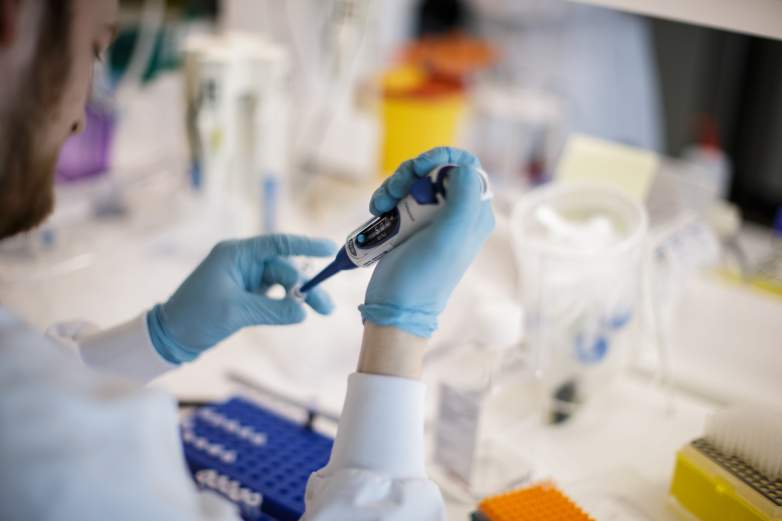
A new study says that kids without symptoms can still spread COVID-19. This is important information as children across America have now headed back to school and daycare centers.
The study was posted to the website of the Centers for Disease Control and Prevention on September 11, 2020. It’s called, “Transmission Dynamics of COVID-19 Outbreaks Associated with Child Care Facilities — Salt Lake City, Utah, April–July 2020.”
According to the CDC, research has already established that children under the age of 10 “have been shown to transmit SARS-CoV-2 in school settings.”
What was found by the new study:
Twelve children acquired COVID-19 in child care facilities. Transmission was documented from these children to at least 12 (26%) of 46 nonfacility contacts (confirmed or probable cases). One parent was hospitalized. Transmission was observed from two of three children with confirmed, asymptomatic COVID-19.
In other words, kids who don’t show COVID-19 symptoms but have the virus have been shown to still spread it to other people.
Here’s what you need to know:
What Are the Public Implications of the New Study?

GettyHealth workers dressed in personal protective equipment (PPE) handle a coronavirus test at a drive-thru testing station at Cummings Park on March 23, 2020 in Stamford, Connecticut.
According to the CDC, the new study has implications in public policy questions. “SARS-CoV-2 Infections among young children acquired in child care settings were transmitted to their household members,” CDC’s website says. “Testing of contacts of laboratory-confirmed COVID-19 cases in child care settings, including children who might not have symptoms, could improve control of transmission from child care attendees to family members.”
The study explained that it collected data in Utah:
To better understand transmission from young children, contact tracing data collected from three COVID-19 outbreaks in child care facilities in Salt Lake County, Utah, during April 1–July 10, 2020, were retrospectively reviewed to explore attack rates and transmission patterns. A total of 184 persons, including 110 (60%) children had a known epidemiologic link to one of these three facilities. Among these persons, 31 confirmed COVID-19 cases occurred; 13 (42%) in children. Among pediatric patients with facility-associated confirmed COVID-19, all had mild or no symptoms. Twelve children acquired COVID-19 in child care facilities. Transmission was documented from these children to at least 12 (26%) of 46 nonfacility contacts (confirmed or probable cases). One parent was hospitalized. Transmission was observed from two of three children with confirmed, asymptomatic COVID-19. Detailed contact tracing data show that children can play a role in transmission from child care settings to household contacts.
What can be done to prevent transmission in such cases? “Having SARS-CoV-2 testing available, timely results, and testing of contacts of persons with COVID-19 in child care settings regardless of symptoms can help prevent transmission. CDC guidance for child care programs recommends the use of face masks, particularly among staff members, especially when children are too young to wear masks, along with hand hygiene, frequent cleaning and disinfecting of high-touch surfaces, and staying home when ill to reduce SARS-CoV-2 transmission,” the study shows.
COVID-19 Symptoms Have Grown Since the Pandemic First Emerged

GettyA researcher works on a vaccine against the new coronavirus COVID-19 at the Copenhagen’s University research lab in Copenhagen, Denmark, on March 23, 2020.
Although this study focuses on asymptomatic children, the list of COVID-19 symptoms has steadily growth since the earliest days of the pandemic. At first, government agencies focused on three main symptoms: Dry cough, a fever, and shortness of breath.
However, they’ve gradually expanded that list to include other things. “People with COVID-19 have had a wide range of symptoms reported – ranging from mild symptoms to severe illness. Symptoms may appear 2-14 days after exposure to the virus,” CDC wrote, adding that people with these symptoms may have COVID-19:
Fever or chills
Cough
Shortness of breath or difficulty breathing
Fatigue
Muscle or body aches
Headache
New loss of taste or smell
Sore throat
Congestion or runny nose
Nausea or vomiting
Diarrhea
The government agency says other symptoms are also possible.
READ NEXT: Aaron Danielson aka ‘Jay Bishop’: Portland Shooting Victim Named